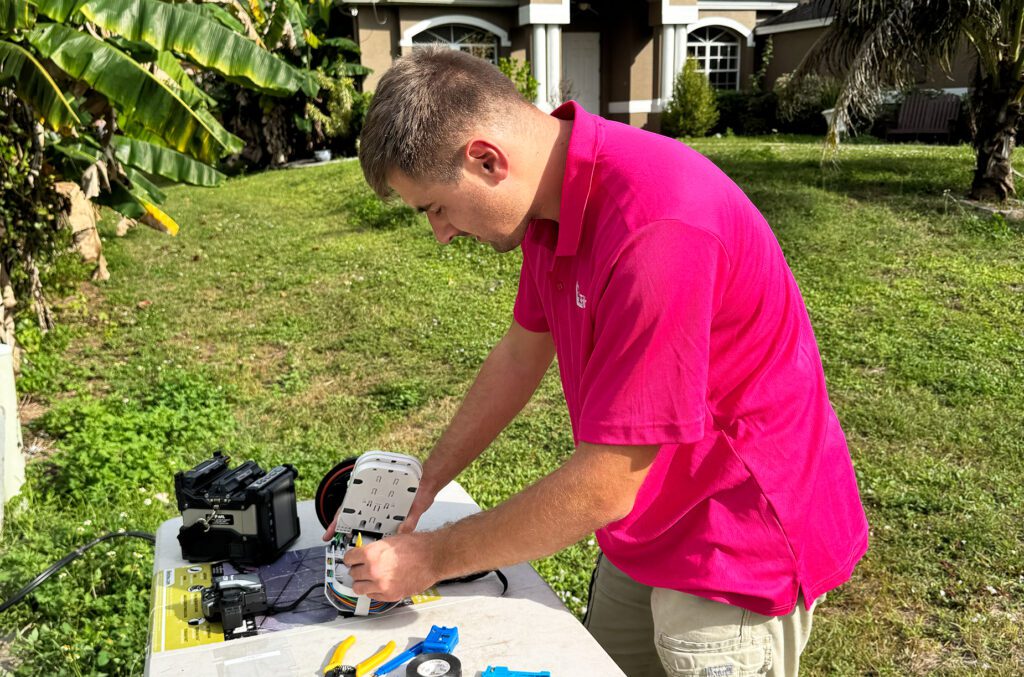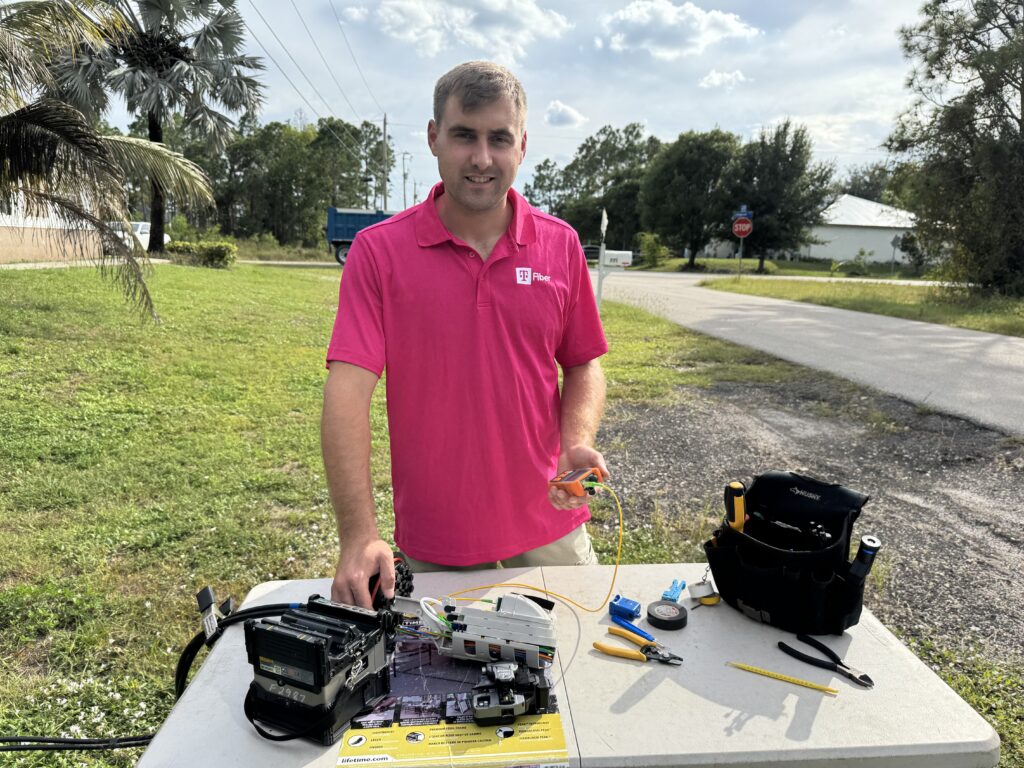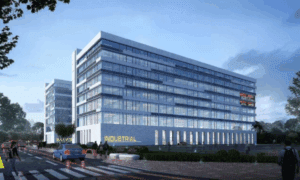Pavlo Budnyk – Fiber Optic Splicer at KAPP LLC, USA. A specialist who has advanced through the career ladder from assistant to senior specialist in the company.
We spoke with Pavlo about the fiber optic network segment, the quality of modern non-splice solutions, and the conceptual differences between all existing methods of optical installation.
Today we will share the acquired knowledge with you, so you will learn how and why you are connected to the Internet in this particular way.

The Role of Connections in Overall Network Quality
Do you know how modern communication networks are built in general? A hypothetical provider analyzes the market and demand for services. Then it studies the target areas, the infrastructure, and its load.
After that, routine but quite complex processes begin:
- Advertising and collecting connection requests. There is no point in developing infrastructure if there is no client base.
- If there are enough requests – network design “on paper.” That is, planning connection routes, points for switches, etc.
- Next, obtaining permits to install equipment. Also, interaction with municipal services, communications authorities, etc.
- After bureaucratic aspects are approved – direct installation and network testing.
- Once the network is ready – connecting subscribers and fine-tuning the infrastructure.
And it is precisely at the installation stage that questions arise. Faster, but with compromises, or longer, but for years? At this stage, a dilemma arises between the feasibility of saving costs and the actual quality and reliability of the network. The choice of installation methods will depend on the result of solving this dilemma.
Differences Between Fiber Optic Installation Options
First of all – fiber can be spliced or mechanically connected. Both options have their advantages and disadvantages and are often combined for purely practical reasons.
At the same time, the dominant type of installation determines the quality of network services that the subscriber receives. Therefore, customer-oriented providers rarely economize on this aspect of the network.
Still, such cases do occur, so it is worth knowing what to expect from networks installed in one way or another. In short, here are the main differences:
| Criterion | Fiber Splicing | Connectors | Splitters |
| Signal loss | 🔹 Very low | 🔸 Medium | 🔸 High |
| Reliability | 🔹 High | 🔸 Medium | 🔹 High |
| Flexibility Reconnection | 🔸 Low | 🔹 High | 🔸 Low |
| Equipment Cost | 🔸 High | 🔹 Low | 🔹 Low |
| Skill Requirement | 🔸 High | 🔹 Low | 🔹 Low |
| Application | Trunks, FTTH | Test, Office | PON, Branching |
Now, a few details about each option.
Optical Splicing: Advantages and Limitations
This is a reliable classic that allows the network to operate stably, as fast and efficiently as possible for all subscribers. Here are its advantages and limitations in a technical context:
| Criterion | Advantages | Limitation |
| Signal loss | Very low (0.01–0.05 dB) | Requires precise alignment |
| Reliability | High, stable operation for decades | Sensitive to contamination during installation |
| Resistance to External Conditions | Resistant to vibration, temperature, moisture | Requires protection of the connection (heat shrink, etc.) |
| Compactness | Minimal connection size | Does not allow quick reconnection |
| Equipment Cost | High (splicer, cleaver, microscope, etc.) | Expensive start for beginners |
| Skill Requirement | Requires certification and experience | Training takes time |
| Installation Speed | High with experienced personnel | Slow for beginners or in field conditions |
The key issue is the complexity of line maintenance and repair. Therefore, this option is better used for building the “body” of the network, i.e., the infrastructure. Subscribers, however, should be connected using more flexible methods.
Non-Splice Solutions: Types and Features
Fast, or mechanical, connection is a top choice for local subscriber connections, fiber branching, etc. Here are some installation subtypes and their features:
| Solution Type | Principle of Operation | Signal Loss | Advantages | Limitation |
| Connectors | Mechanical fiber connection | 0.2–0.5 dB | Fast installation, possibility of reconnection | Less stable, sensitive to dust |
| Splitters | Passive signal branching | 3–15 dB | Mass connection, does not require power | High loss, fixed configuration |
| Mechanical Sleeves | Insertion of fibers into an alignment block | ~0.3–0.6 dB | Simplicity, low cost | Low long-term reliability |
| Fast Connectors | Pre-assembled connectors | ~0.3 dB | Ideal for urgent solutions | Limited quality in mass use |
The “body” of the network is spliced, and the solutions listed above are used for subscriber connections or local fiber distribution.

How Does This Affect the User?
The answer – not at all. Every conscientious and responsible provider designs the network with extra capacity. This allows the mitigation of signal loss, bandwidth issues, etc., for the end user. Ultimately, the subscriber receives a channel according to the tariff, with practical parameters matching those announced.
The system works as follows:
- The network infrastructure is laid with fiber and installed using splicing.
- Splitters are installed on communication poles in the designated area.
- Each subscriber connection is made mechanically. The fiber is brought into the office, house, or apartment and connected to the ONU, and from it to the usual RJ-45 protocol router.
Signal loss at the splitter is offset by increased power from the servers. Therefore, the user does not experience speed drops or similar issues.
“The reliability of the system and the subscriber UX depends precisely on the quality of splicing of the main part of the network, the equipment, splitters, etc. And as a splicing specialist, I can assure you – fiber remains the best solution for Internet connection, communications, and so on,” Pavlo concludes.






























